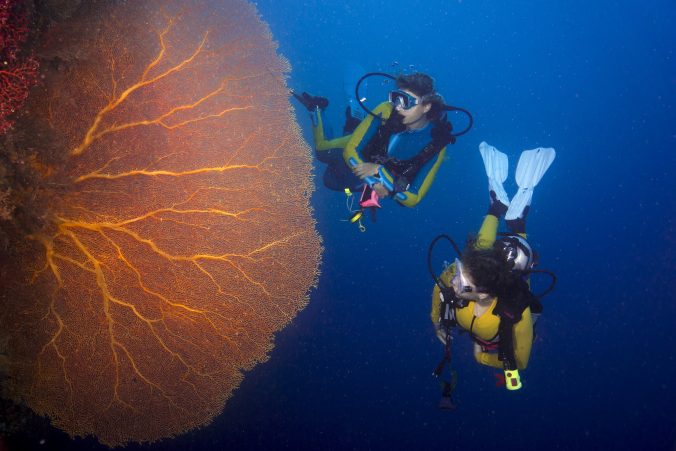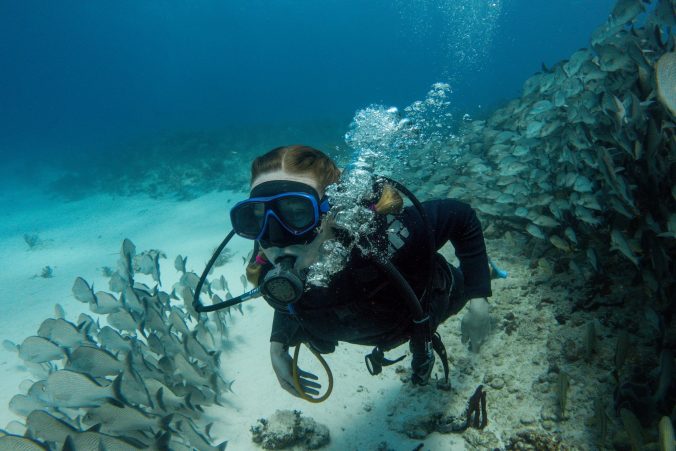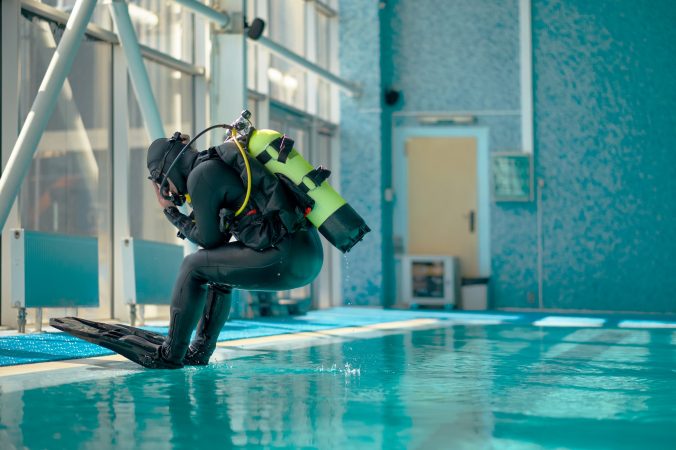Among the many attractions of the Similan Islands, scuba diving is a great way to experience a unique culture and landscape. In this article, we’ll talk about some of the most beautiful dive sites in the area, such as Richelieu Rock, Fantasea Reef, Elephant Head Rock, Beacon Reef, and more. Once you’ve had your fill of pristine waters, you can plan your next trip by exploring a few of the islands’ most popular attractions.
Richelieu Rock
If you are looking for a dive site that offers you diverse marine life, you need to look no further than Richelieu Rock. The submerged rock is home to numerous sea anemones and sea fans. It is also home to anemone fish, moray eels, scorpion fish, giant grouper, macro life and even whale sharks! You should definitely give this dive a try and make it a part of your next trip to Thailand.
You can visit Richelieu Rock for scuba diving between late October and early May. During this time, you’ll find the water temperature around 30degC. However, this may drop to as low as 25degC due to the presence of thermoclines, blankets of cold water. It is best to dive during the dry season, which is from October to May. The visibility will be reduced during this time due to the presence of more plankt than during other months.
This dive site is known for its abundant marine life, including large schools of trevally and whale shark. Aside from these, there are also nudibranchs and peacock mantis shrimps that live on the rock. You can even see the Manta Ray! This is one of the ultimate dive experiences. As the area is not overly crowded, you can spend a whole day discovering all that the dive site has to offer.
There are several dive sites around the Similan Islands. Liveaboards will usually do more than one dive at Richelieu Rock, sometimes four or more. Because the rock is a horseshoe shape, it offers excellent shelter from currents. Your dive plan will depend on the strength and direction of the currents, but you can target the deeper northern corner on your first dive and profile your next three or four dives from there.
Fantasea Reef
Fantasea Reef is one of the top dive sites off the Similan Islands. This site is filled with marine life, soft coral, and great rock formations. It is also a favorite among photographers for its great underwater photography opportunities. You can enjoy a great dive at this site year-round, but the best time to visit is October to November. The diving is great here, and you will be rewarded with a spectacular view.
The eastern shore features pretty hard coral gardens and sloping reef banks that drop thirty metres. You’ll also find large bommies rising from the sea bed, surrounded by soft and fan corals. These sites are known as true aquarium diving, with abundant critters. You’ll see schools of yellowtail barracuda and octopuses. Other animals you can spot here include a variety of tropical fish.
Several dive sites are available in the island. The north-east side of the island features a large fringing reef, which gradually slopes down to the 24m sandy bottom. Many reef fish, including the rare leopard shark, can be found here, including eels, nudibranchs, and butterflyfish. You can also enjoy a night dive here.
There are several other fantastic dive sites in the Similan Islands. Elephant Head is the most popular and most beautiful diving spot here, with channels and caves that extend for forty meters. Different species of sharks live in these caves, so it’s a good place for shark diving. Christmas Point and Fantasea Reef are also well worth a visit. While visiting the Similan Islands, be sure to check the diving season before traveling.
Elephant Head Rock
Scuba divers have the option to explore the scuba diving sites in the Similan Islands. There are plenty of sites, but Elephant Head Rock is one of the most popular. Located in open water between Island 8 and the next island south, Elephant Head Rock resembles an archway at low tide. Diving here is not for the faint of heart. This dive requires advanced skills and planning.
Divers enter the water just south of Elephant Head Rock. There is no mooring line so divers must be prepared to descend immediately when the surface is reached. The current here can pull a diver off the rock, so it’s important to know what to expect before diving. However, the diving is worth the visit! Elephant Head Rock is a spectacular site that has something to offer to anyone interested in scuba diving.
A unique dive site, Elephant Head Rock consists of three massive granite boulders that look like an elephant’s head. The site is a haven for marine life with a wide range of creatures. This rock is covered in sea fans, which flourish in the water currents around it. The stunning rock formations make for an incredible back drop for underwater photography. The name ‘Elephant Head Rock’ is a fitting one.
The reef stretches across the eastern side of the island, and hard corals cover much of the surface. The SS Great Lakes is a notable site for sighting leopard sharks and other large stingrays. Puff-fish, lionfish, and parrotfish are also common on the shallow side. Flatworms and cuttlefish are also common among the reef fish and stingrays.
Beacon Reef
One of the highlights of Beacon Reef scuba diving is its massive array of colour hard corals. In addition to colourful hard corals, you’ll also find a large range of tropical fish and moorish idols. You’ll be able to see all of these creatures as well as various types of reef sharks. The visibility here is consistently in excess of 20 meters.
One of the best dives in Beacon Reef is the wreck of the Atlantis X, which sank in thirty meters of water in 2002. It is situated just off the shore, making it an excellent wreck dive for beginners. The wreck is rich with a variety of colorful marine life and makes for an excellent photo opportunity. The stern of the ship is a good spot for beginners, so be sure to check out the entire wreck before descending to its sandy bottom.
Another dive site is Shark Fin Reef, which is home to granite boulders surrounded by gorgonians and hard coral. You can expect to see Napoleon wrasse, lionfish, turtles, and several other types of fish. While on your dive, you may also encounter schools of batfish, blue-faced angelfish, and leopard sharks. Depending on the time of year, you may be lucky enough to see a whale shark or manta ray.
Another dive site in the Similan Islands is Beacon Point. Also called Monkey Face Rock, this dive site features large patches of hard coral reef and boulder formations. The depth here drops to fifty-five meters and is home to a wide variety of fish, including big pelagics. The islands are located in the central part of the Philippines and are accessible by liveaboard or day trip from Phuket.
West of Eden
The West of Eden diving site is located on the west side of Similan #7, Koh Payu. The name of the dive site is derived from Milton’s Paradise Lost, which also became the title of Steinbeck’s novel. The site is ideal for scuba divers seeking to explore the underwater world. A liveaboard dive ship drops divers off at the site’s southern end. From there, they descend to a depth of approximately 15-20m.
The West of Eden is also known as ‘West of Six’. It is a great place for shark diving, and it is easy to access from shore. The west side of the island is home to huge granite boulders that are covered in sea fans and soft corals. This dive site is a great destination for photographers and has many photo opportunities, including the possibility of seeing Giant Manta rays and Whale Sharks.
The West of Eden dive site is comprised of two distinct areas: the southern and northern portions. The southern section, from the mooring to the southern tip, is a reef garden, with many different types of corals. Staghorn coral and small lobsters are abundant, and glassfish cover many of the coral formations at the site. This site is ideal for night diving, and many stingrays have been spotted here.
The temperature is 83-87 degrees Fahrenheit year-round. The visibility is 15 to 30 meters, depending on the tide. The visibility can be low, but the site offers excellent scuba diving conditions for novices to experts. Most dive sites are shallow and easy, allowing divers of all levels to enjoy the experience. So, you can dive comfortably in any season. It is important to know what to expect before diving in the West of Eden.










